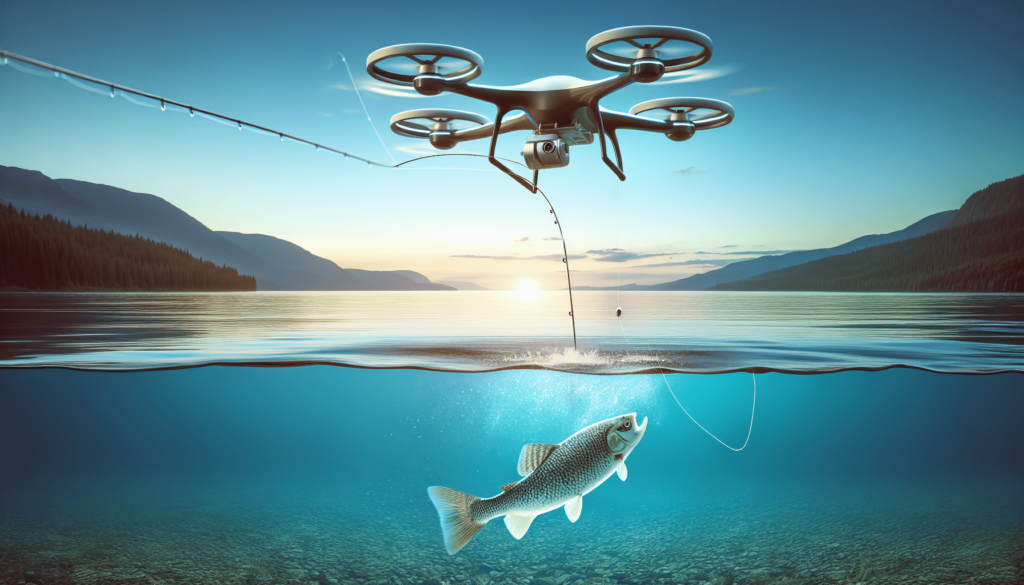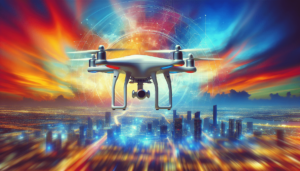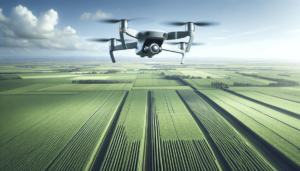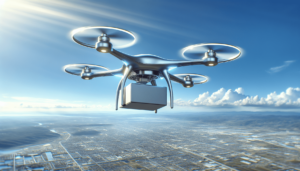Have you ever wondered how technology could revolutionize the age-old practice of fishing? This inevitably leads us to a modern, somewhat quirky innovation: drone fishing. Here, I aim to untangle this unexpected tech twist, weaving together tradition with futuristic gadgetry, creating a narrative that reveals how even the most serene of pastimes isn’t immune to the influence of technology.

The Emergence of Drone Fishing
What Is Drone Fishing?
Drone fishing is essentially the use of unmanned aerial vehicles, commonly known as drones, to carry your bait and drop it in waters that may be difficult to reach by traditional casting techniques. This fresh approach is not just about novelty but evolving a pastime in ways few could have predicted. Drones offer anglers the chance to explore new depths and territories, bringing a level of accessibility and precision previously unimaginable.
A Brief History of Drones in Recreational Activities
Drones were initially known for their military use, yet over the years, they found a presence in recreational activities, offering captivating aerial photography and videography opportunities. Their integration into various hobbies has now inexorably led them to shores and riverbanks worldwide. Surprisingly, drone fishing is not so far-fetched a concept. As the pursuit of more efficient methods continually evolves, it’s no wonder that anglers gravitated towards drones.
The Mechanics Behind Drone Fishing
How Does Drone Fishing Work?
To understand drone fishing, we need to unravel how these devices function. Generally, a line is attached to the drone, carrying the bait and hook to targeted spots. At its core, the process involves:
- Mounting your baited fishing line to the drone.
- Using the drone’s GPS and camera for precise lure placement.
- Dropping the bait in strategic locations.
This technique opens an abundance of possibilities, allowing fishing in areas previously deemed unreachable.
Types of Drones Suitable for Fishing
Not all drones are built equal. When considering drones for fishing, there are several specifications to account for:
| Feature | Importance |
|---|---|
| Payload Capacity | Ensures the drone can carry the fishing line safely. |
| Battery Life | Essential for prolonged fishing sessions. |
| GPS Accuracy | Critical for precise bait placement. |
| Water Resistance | Protects the drone from inevitable splashes. |
Choosing the right drone involves balancing these features with your specific angling needs, ensuring you have a model that is both reliable and efficient.

Benefits of Using Drones in Fishing
Enhanced Precision and Range
One of the standout benefits of drone fishing is the sheer precision it enables. By combining high-quality cameras and GPS systems, anglers can survey vast areas, selecting precise drop spots often nestled amidst otherwise unreachable aquatic terrain. The increased distance, coupled with enhanced accuracy, renders even secluded, deeper waters accessible.
Time and Effort Efficiency
Drone fishing streamlines the whole casting process. By minimizing the physical exertion associated with lining, casting, and reaching into depths manually, it offers a reprieve from back-breaking attempts to find that prime spot. The ease with which one can cast far and wide redefines the efficient use of time, allowing anglers to focus on the experience rather than logistics.
Environmental Impact Considerations
Interestingly, drone fishing can potentially reduce the environmental footprint. Traditional boats and fishing methods might disrupt local ecosystems and aquatic life. Drones, however, glide quietly and often unobtrusively, lessening the disturbance caused to nature. The minimized physical impact aligns well with the increasing ecological consciousness among enthusiasts.
Challenges and Ethical Considerations
Safety Concerns
While drone fishing offers many advantages, it is not without its challenges. Safety remains a significant issue; drones are subject to mechanical failures, which could pose risks to both the angler and wildlife. Ensuring regular maintenance and adherence to operational guidelines mitigates such risks.
Regulatory Frameworks
Drone use is subject to stringent regulations, which vary by country and locality. Anglers must acquaint themselves with local drone fishing laws, ensuring all permits and guidelines are diligently followed. This compliance helps avoid legal repercussions and promotes responsible usage.
Ethical Implications
There’s an ongoing conversation about the ethics of drone fishing. Purists argue that using drones detracts from the traditional narrative of the sport, shifting focus from skill to technology. Balancing innovation with tradition is a delicate act, one increasingly relevant in discussions surrounding technology’s role in nature.
Future Trends in Drone Fishing
Technological Innovations
As drones evolve, so too will their role in fishing. Emerging trends suggest longer battery lives, better weather resistance, and increased payload capacities. These improvements will likely lead to new possibilities for anglers, offering even greater autonomy and access.
Integration with IoT and AI
The Internet of Things (IoT) and artificial intelligence (AI) are poised to revolutionize drone fishing. Imagine real-time analytics, automated location tracking, and AI-driven environmental assessments, offering insights that refine the approach, making it even more effective and sustainable.
Expanding Drone Fishing Communities
As this niche grows, so too will communities dedicated to sharing tips, techniques, and stories, fostering a deeper connection among anglers worldwide. Online platforms and forums provide invaluable resources, bridging gaps and building networks that encourage knowledge exchange and exploration.
Practical Tips for Aspiring Drone Anglers
Selecting the Right Equipment
Choosing the correct drone and auxiliary gear is the starting point for success:
- Drones: Prioritize attributes like durability, water resistance, and payload capacity.
- Cameras: High definition helps in identifying ideal fishing spots.
- Controllers: User-friendly interfaces make a significant difference for beginners.
Learning the Necessary Skills
Mastering drone fishing requires practice. Novices should consider:
- Tutorials: Both online and in-person sessions aid in fundamental skill-building.
- Mock Casting: Rehearsals without bait to hone controlling skills.
- Joining Workshops: Learning alongside others speeds up the learning curve.
Safety and Maintenance
Proper care extends the life of your drone and ensures safety. Regularly check for:
- Mechanical Integrity: Keep propellers and rotors free from damage.
- Battery Health: Maintain optimal battery conditions to avoid emergency failures.
- Firmware Updates: Keeps functionalities smooth and in line with the latest advancements.
Conclusion
As we navigate the future of drone fishing, it becomes increasingly apparent how technology reshapes even our most cherished traditions. While this evolution presents both challenges and opportunities, it invites us to appreciate how modern ingenuity can enhance our interactions with nature. Embracing drone fishing doesn’t diminish the spirit of angling; rather, it enriches the journey, casting new light on the timeless pursuit of the catch.


